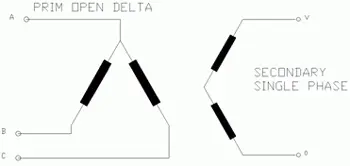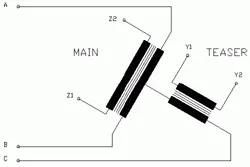As the demand for diverse power supply solutions increases, many users now require the ability to convert 3 phase power to single phase power. Whether you need to convert three phase to single phase for residential devices or industrial applications, our high-quality phase converter solutions ensure safe and efficient operation.
Overview
Three phase power systems consist of three live wires (L1, L2, and L3) and one neutral wire (N), typically providing 380V. In contrast, single phase systems use one live wire and a neutral wire, usually delivering 220V. The process to convert 3 phase to single phase involves selecting one live wire from the three available and pairing it with the neutral wire to form a single phase circuit. This guide details the proper procedures to ensure a reliable and secure setup using our advanced phase converter.
Tools and Materials Needed
Before starting the installation, ensure you have the following tools and materials:
- Screwdrivers and electrical tape
- Electrician’s test pen and an air switch
- A single phase socket (or applicable device)
- Certified wiring that meets national standards
Step-by-Step Wiring Instructions
- Safety First:
Turn off the main switch and use an electrician’s test pen to verify that the power is off. This step is crucial for ensuring operator safety before any work begins. - Identify the Connections:
Open the three phase distribution panel and locate the three live wires labeled L1, L2, and L3, along with the neutral wire (N). - Select the Correct Line:
For a basic conversion, choose one live wire (for example, L1) and pair it with the neutral wire (N) to connect to your single phase socket or device. This method is a straightforward way to convert three phase to single phase. - Manage Multiple Devices:
If powering multiple single phase devices simultaneously, connect each device to a different live wire (e.g., first device on L1 and N, second on L2 and N, third on L3 and N). This practice helps maintain load balance and prevents overloading any single phase. - Final Safety Checks:
Verify that all connections are secure, all screw terminals are tightened, and the wiring ends are properly insulated with electrical tape. Conduct a thorough test before restoring power.


Important Safety Considerations
- Power Limitation:
Do not connect high-power devices such as air conditioners or welding machines directly across phases without proper conversion. Ensure that the overall power consumption is within the capacity of your phase meter to avoid overloading. - Equipment Compatibility:
Some three phase equipment (like motors) cannot simply be converted to single phase power without additional components such as specialized capacitors and reconfiguration. Using the correct phase converter is essential. - Voltage and Leakage Monitoring:
Regularly monitor the voltage between the live and neutral wires. If you observe a significant deviation (below 200V or above 240V), inspect the wiring for losses or transformer issues. A leakage protector (30mA) is recommended for continuous safety monitoring. - Professional Installation Recommended:
Improper wiring can lead to serious hazards like electric shock or fire. If you are not a qualified electrician, please seek professional assistance to install your phase converter safely.
Conclusion
By following this comprehensive guide, you can confidently convert 3 phase to single phase using our specialized phase converter. Our approach not only meets the functional demands of converting three phase to single phase but also ensures that your electrical installations conform to the highest safety standards. This solution is ideal for both residential and industrial applications where reliable single phase power is required.

